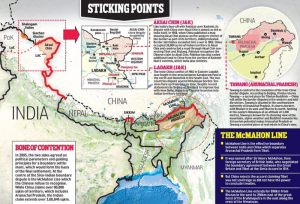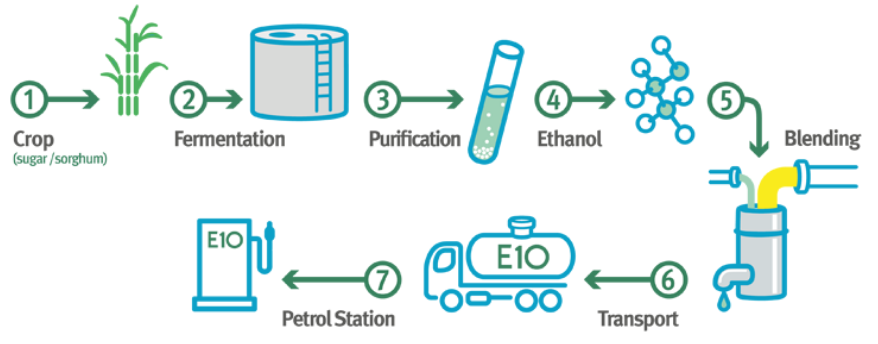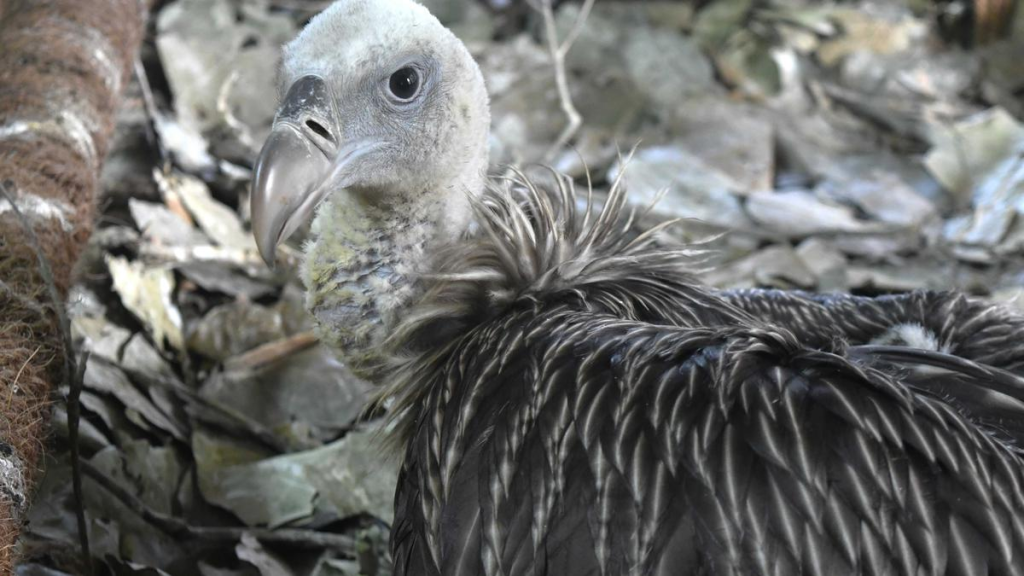CONTENTS
- China Reaffirms Territorial Claims with New Map Release
- Electrified Flex fuel vehicle
- Himalayan Vulture
- Intergovernmental Science-Policy Platform on Biodiversity and Ecosystem Services
China Reaffirms Territorial Claims with New Map Release
Context:
China has introduced the “2023 edition of the standard map of China,” reinforcing its territorial assertions in contested areas. This move aligns with China’s “National Mapping Awareness Publicity Week,” highlighting the importance of precise and uniform cartography practices.
Relevance:
GS II: International Relations
Dimensions of the Article:
- China’s Territorial Claims in the New Map
- India-China Border Dispute: Key Points
- Border Dispute Settlement Mechanisms
- Implications of China’s New Map on India
- Strategies for India to Address China’s Territorial and Regional Assertiveness
China’s Territorial Claims in the New Map
China’s latest map release reinforces its territorial assertions through several key points:
- Incorporating Disputed Regions: The map solidifies China’s territorial claims over disputed regions like Arunachal Pradesh and the Aksai Chin area.
- Ongoing Controversies: These territorial claims have long been contentious issues between China and India.
- “Nine-Dash Line”: The map prominently displays the controversial demarcation, encompassing the entire South China Sea and emphasizing China’s expansive maritime claims.
- Inclusion of Tenth Dash Line: The map introduces the tenth dash line, underscoring China’s stance on Taiwan’s sovereignty.
- Consistency with Actions: China’s move aligns with its previous actions, such as standardizing place names in Arunachal Pradesh and surrounding areas.
- Digital Mapping Initiatives: Alongside the physical map, China plans to release digital maps for diverse applications like location-based services, precision agriculture, platform economy, and intelligent connected vehicles.
India-China Border Dispute: Key Points

The India-China border dispute centers around several crucial aspects:
- Complex Territorial Disputes: The dispute involves the lengthy and intricate territorial disagreements along the 3,488-kilometer shared border between India and China.
- Aksai Chin and Arunachal Pradesh: The main contested regions are Aksai Chin in the west and Arunachal Pradesh in the east.
- Aksai Chin: China administers Aksai Chin within its Xinjiang region, while India regards it as part of Ladakh. This area’s significance lies in its proximity to the China-Pakistan Economic Corridor (CPEC) and its potential military importance.
- Arunachal Pradesh: China claims the entirety of Arunachal Pradesh, referring to it as “South Tibet,” but India administers it as a northeastern state.
- Undefined Demarcation: The border lacks a clear demarcation, and certain stretches lack a mutually agreed Line of Actual Control (LAC). The LAC was established post the 1962 Sino-Indian War.
- Three Sectors: The India-China border is divided into Western (Ladakh), Middle (Himachal Pradesh and Uttarakhand), and Eastern (Arunachal Pradesh and Sikkim) sectors.
- Historical Military Standoffs: The dispute has resulted in multiple military confrontations and conflicts, notably the 1962 Sino-Indian War. Both nations have pursued agreements and protocols to manage tensions and maintain peace along the border.
- Recent Confrontations: Notable recent conflicts occurred in Ladakh’s Galwan Valley in 2020 and Arunachal Pradesh’s Tawang in 2022.
- Escalation Trend: Observers on both sides of the Line of Actual Control (LAC) recognize an increase in significant military confrontations since 2013.
Border Dispute Settlement Mechanisms: Overview
The India-China border dispute has seen various attempts at resolution and management through several mechanisms:
- Shimla Convention (1914): This convention aimed to establish the boundary between Tibet and North East India. It was attended by representatives of China, Tibet, and British India. While British India and Tibet signed the agreement, China did not. India recognizes the Shimla agreement and the McMahon Line, but China rejects both.
- Panchsheel Doctrine: The Panchsheel, or Five Principles of Peaceful Coexistence, stressed mutual respect for sovereignty and territorial integrity. It aimed to foster peaceful relations between India and China.
- Agreement on Maintenance of Peace and Tranquility (1993): This agreement called for refraining from using force, acknowledging the Line of Actual Control (LAC), and resolving the border dispute through negotiations. It aimed to maintain peace and stability along the border.
- Agreement on Confidence Building Measures (1996): This agreement aimed to reduce tensions along the border. It included pledges on non-aggression, advance notification of significant troop movements, and the exchange of maps indicating the LAC to address disagreements.
- Border Defence Co-operation Agreement (2013): Following the Depsang Valley incident, this agreement was signed to enhance communication and coordination between military personnel along the border. It aimed to prevent misunderstandings and reduce the risk of conflicts.
Implications of China’s New Map on India:
China’s release of the new map with its territorial claims has several implications for India:
- Territorial Claims: China’s inclusion of disputed territories in its official map challenges India’s sovereignty over Arunachal Pradesh and Aksai Chin, areas that have been points of contention between the two countries for years.
- Escalating Border Dispute: By reinforcing its territorial claims, China is escalating the border dispute between the two nations, potentially leading to increased tensions along the India-China border.
- Diplomatic Tensions: China’s actions can lead to diplomatic tensions between India and China. India has consistently rejected China’s territorial claims and is likely to respond by reaffirming its own claims over the disputed areas.
- Bilateral Relations: The release of the new map can strain India-China relations in various areas. Cooperation in trade, investment, and people-to-people exchanges may be affected as both countries grapple with territorial disputes.
- Regional Balance of Power: The India-China border dispute has implications for the broader regional balance of power. It can influence India’s strategic alignments with other countries and regional groupings to counter China’s influence in the region.
- Security Concerns: The heightened territorial dispute can impact the security situation in the border region and necessitate increased military presence and readiness, diverting resources from other developmental activities.
- International Attention: China’s actions and territorial claims are likely to attract international attention and concern.
Strategies for India to Address China’s Territorial and Regional Assertiveness:
To effectively tackle China’s territorial and regional assertiveness, India can consider the following strategies:
- Diplomatic Engagement: Continue diplomatic talks with China through established mechanisms like the Special Representative talks and Working Mechanism for Consultation and Coordination (WMCC) on India-China border affairs.
- Peaceful Resolution: Emphasize peaceful resolution of disputes, adherence to bilateral agreements, and the importance of maintaining peace and stability along the border.
- Border Infrastructure: Invest in improving border infrastructure, including roads, bridges, airstrips, and communication networks, to enhance mobility and response capabilities for Indian forces.
- Logistics and Bases: Develop logistics hubs and forward bases to ensure swift deployment of troops and supplies in the border regions.
- Modernization of Armed Forces: Invest in modernizing the armed forces with advanced equipment, technology, and surveillance capabilities to effectively monitor and respond to any border incidents.
- Troop Training: Focus on enhancing the training and readiness of troops stationed in border areas.
- Regional Partnerships: Strengthen partnerships with like-minded countries and regional organizations that share concerns about China’s assertiveness in territorial disputes.
- Collaboration on Defense: Collaborate on intelligence-sharing, joint military exercises, and coordinated responses to regional challenges.
- Diversification of Economic Ties: Diversify economic ties to reduce dependence on China and enhance economic resilience.
- Trade Agreements: Explore trade agreements and partnerships with countries that can provide alternative markets and investment opportunities.
- International Advocacy: Raise the border issue at international forums to garner support for a peaceful resolution based on international norms and principles.
- Upholding Norms: Uphold international norms and principles related to territorial integrity and dispute resolution mechanisms.
- Legal Approach: Continue to engage with international legal experts to present India’s case on the border issue.
-Source: The Hindu
Electrified Flex fuel vehicle
Context:
Recently, the Minister of Road Transport and Highways of India unveiled the Prototype of BS-6 Stage-II, Electrified Flex fuel vehicle.
Relevance:
GS III: Science and Technology
Dimensions of the Article:
- Electrified Flex Fuel Vehicle: A Breakthrough in Sustainable Mobility
- Ethanol and Ethanol Blending in India
Electrified Flex Fuel Vehicle: A Breakthrough in Sustainable Mobility
- Introduction to the world’s first BS-6 Stage-II Electrified Flex Fuel Vehicle.
- Unique combination of a Flexi Fuel engine and an electric powertrain.
Understanding the Mechanics of Flexible Fuel Cars Utilizing Ethanol
- Flexible fuel vehicles (FFVs) and their internal combustion engines.
- Capability to operate using various gasoline-ethanol blends, up to 83% ethanol.
- Common composition of flex fuel: 85% ethanol and 15% petrol.
- Overcoming the energy disparity: Bio-ethanol’s lower energy content.
- Advancements in technology to equalize the calorific value of bio-ethanol and petrol.
- Pioneering the way: India’s first 100% dual fuel vehicle for Indian roads.
- Global Landscape of Flex Fuel Engines: Adoption and Popularity
- Prevalence of flex fuel engines in diverse regions: Brazil, the United States, European Union, China.
- Implication of widespread use and its contribution to sustainable transportation.
Ethanol and Ethanol Blending in India:
- Ethanol is an agricultural by-product obtained mainly from the processing of sugar from sugarcane, but it can also be derived from other sources such as rice husk or maize.
- Ethanol blending is the practice of mixing ethanol with petrol in order to reduce the consumption of fossil fuels in vehicles.
- E20 fuel refers to a blend consisting of 20% ethanol and 80% petrol.
- In February 2023, the Prime Minister of India launched the E20 fuel pilot project in Bengaluru, which involves blending 20% ethanol with petrol.
- Initially, this pilot project covers at least 15 cities and is expected to be gradually implemented nationwide.
- Over the years, India has been steadily increasing the proportion of ethanol blended with petrol. The blending rate has risen from 1.53% in 2013-14 to 10.17% in 2022.
- The government has advanced its target of achieving 20% ethanol blending in petrol from 2030 to 2025, aiming to further reduce reliance on fossil fuels.
- As part of its G20 presidency, the Indian government has proposed the establishment of a global biofuel alliance with countries like Brazil. This alliance would focus on promoting the use of biofuels internationally.

-Source: The Hindu
Himalayan Vulture
Context:
Recently, the Assam State Zoo in Guwahati has achieved a groundbreaking feat by successfully breeding the elusive Himalayan vulture (Gyps himalayensis) in captivity for the first time in India.

Relevance:
GS III: Environment and Ecology
Dimensions of the Article:
- Exploring the Himalayan Vulture
- Ketoprofen and Aceclofenac: Impact on Vultures
Exploring the Himalayan Vulture
Conservation Status:
- IUCN Red List: Near Threatened.
- CITES Appendix II.
Impressive Characteristics:
- Stature and Wingspan: Among the largest Old World vulture species, boasts an imposing wingspan and formidable presence.
- Camouflaged Plumage: Adorned with shades of black and brown, aiding in seamless blending with rugged mountain landscapes.
- Mastery of Scavenging: Possesses a powerful hooked beak and keen eyesight, excelling as an efficient scavenger, vital for carrion clean-up.
Habitat and Range:
- Himalayan Haven: Primarily found in the towering peaks and valleys of the Himalayan mountain range.
- Winter Migration: Commonly migrates to the Indian plains during the winter season.
- Extensive Range: Thrives across countries like India, Nepal, Bhutan, and China, adapting to challenging high-altitude settings.
Ecosystem Role:
- Ecological Cleaner: Serves as a crucial top predator and scavenger, maintaining habitat health by disposing of animal remains.
- Disease Prevention: Acts as a shield against disease spread from decaying carcasses, contributing to ecosystem balance.
Captive Breeding Challenges and Success:
- Snowy Breeding Habits: Natural breeding in snow-clad mountains posed captivity challenges.
- Acclimatization Triumph: Successful zoo breeding via long-term captivity and acclimatization to tropical conditions.
Threats and Conservation Efforts:
- Vulnerability Factors: Habitat loss, food scarcity, and accidental poisoning from veterinary drugs contribute to its vulnerable status.
- Conservation Breeding Centers: Vital role played by centers like the Vulture Conservation Breeding Centre (VCBC) in Rani, Assam, in safeguarding this vulture species.
Ketoprofen and Aceclofenac: Impact on Vultures
Ketoprofen and Aceclofenac: NSAIDs for Pain and Inflammation:
- Ketoprofen and aceclofenac are non-steroidal anti-inflammatory drugs (NSAIDs) commonly used to alleviate pain and reduce inflammation in animals, particularly cattle.
- These drugs are prescribed for various conditions including arthritis, injuries, and post-surgery pain management.
Harmful Effects on Vultures:
- Lethal Consequences: These NSAIDs have proven to be detrimental to vultures, leading to severe health consequences and even death.
- Kidney Failure: Consumption of animal carcasses treated with ketoprofen or aceclofenac results in kidney failure among vultures.
- Carcass Contamination: Vultures feeding on treated animal remains ingest the drugs, which wreak havoc on their renal system, ultimately causing fatal damage.
Ecological Impact:
- Ecosystem Disruption: The decline in vulture populations due to NSAID toxicity disrupts the ecological balance, as vultures play a crucial role in scavenging carcasses and preventing the spread of diseases.
- Carrion Cleanup: Vultures’ natural scavenging behavior contributes to the removal of carcasses, thus reducing the risk of diseases that could arise from decaying animal remains.
Conservation Concerns and Measures:
- Drastic Decline: The toxic effects of these NSAIDs have significantly contributed to the decline of vulture populations in certain regions.
- Conservation Initiatives: Awareness campaigns, changes in veterinary practices, and efforts to limit the use of these harmful drugs in livestock have been implemented to mitigate the impact on vultures.
- Vulture Safe Zones: Establishing designated areas where safe food sources are available can help safeguard vultures from the dangers of NSAID-contaminated carcasses.
Importance of Vulture Conservation:
- Environmental Balance: Vultures’ role in carrion disposal prevents the spread of diseases and contributes to a healthier ecosystem.
- Biodiversity Protection: Ensuring vulture survival is crucial for maintaining biodiversity and preventing imbalances in the food chain.
-Source: The Hindu
Intergovernmental Science-Policy Platform on Biodiversity and Ecosystem Services
Context:
The Intergovernmental Science-Policy Platform on Biodiversity and Ecosystem Services (IPBES) has gathered at Bonn, Germany, for the body’s 10th plenary.
Relevance:
GS III: Environment and Ecology
Dimensions of the Article:
- IPBES: Empowering Biodiversity Governance through Expert Insights
- Organizational Structure
IPBES: Empowering Biodiversity Governance through Expert Insights
- Establishment: Formed as an independent intergovernmental body in 2012.
- Objective: Deliver unbiased scientific evaluations on Earth’s biodiversity, ecosystems, and their societal benefits.
- Inspiration: Modeled after IPCC and Millennium Ecosystem Assessment.
Scientific Guidance for Policymakers
- Core Role: Furnishes policymakers with objective scientific assessments.
- Focus Areas: State of knowledge about biodiversity, ecosystems, and their human benefits.
- Tools and Methods: Offers strategies to safeguard and sustainably utilize natural assets.
Distinct Autonomy from United Nations
- Autonomy: Not affiliated with the United Nations.
- Secretariat Services: UNEP provides administrative support post 2013, upon IPBES Plenary request and UNEP Governing Council approval.
Global Membership and Inclusivity
- India’s Involvement: India is a participating member nation.
Organizational Structure
- Plenary: Governing body comprises representatives from IPBES member States, convening annually.
- Observers: States yet to join IPBES, CBD, other biodiversity-related conventions, relevant UN entities, and pertinent organizations.
- Bureau: Oversees administrative functions; headed by IPBES Chair, four Vice-Chairs, and additional officers.
- Multidisciplinary Expert Panel (MEP): Five experts from each of the five UN regions overseeing IPBES scientific and technical endeavors.
- Stakeholders: Encompasses all contributors to and users of IPBES outputs.
- Expert Groups & Taskforces: Selected experts responsible for executing IPBES assessments and other deliverables.
- Secretariat (including Technical Support Units): Ensures IPBES efficiency by supporting Plenary, Bureau, and MEP; also executes Platform’s work and administrative tasks.
-Source: The Hindu





